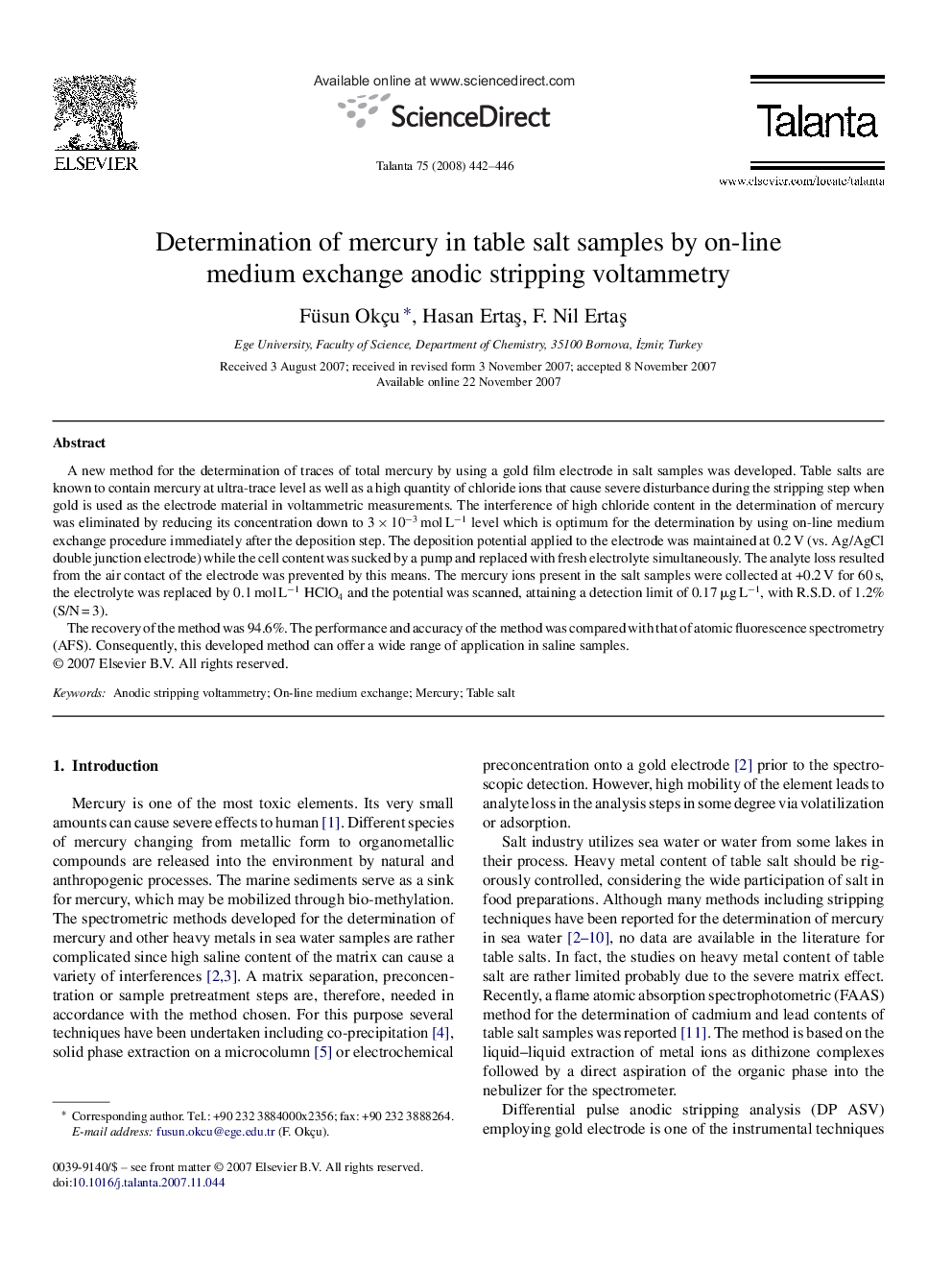| Article ID | Journal | Published Year | Pages | File Type |
|---|---|---|---|---|
| 1243905 | Talanta | 2008 | 5 Pages |
A new method for the determination of traces of total mercury by using a gold film electrode in salt samples was developed. Table salts are known to contain mercury at ultra-trace level as well as a high quantity of chloride ions that cause severe disturbance during the stripping step when gold is used as the electrode material in voltammetric measurements. The interference of high chloride content in the determination of mercury was eliminated by reducing its concentration down to 3 × 10−3 mol L−1 level which is optimum for the determination by using on-line medium exchange procedure immediately after the deposition step. The deposition potential applied to the electrode was maintained at 0.2 V (vs. Ag/AgCl double junction electrode) while the cell content was sucked by a pump and replaced with fresh electrolyte simultaneously. The analyte loss resulted from the air contact of the electrode was prevented by this means. The mercury ions present in the salt samples were collected at +0.2 V for 60 s, the electrolyte was replaced by 0.1 mol L−1 HClO4 and the potential was scanned, attaining a detection limit of 0.17 μg L−1, with R.S.D. of 1.2% (S/N = 3).The recovery of the method was 94.6%. The performance and accuracy of the method was compared with that of atomic fluorescence spectrometry (AFS). Consequently, this developed method can offer a wide range of application in saline samples.
